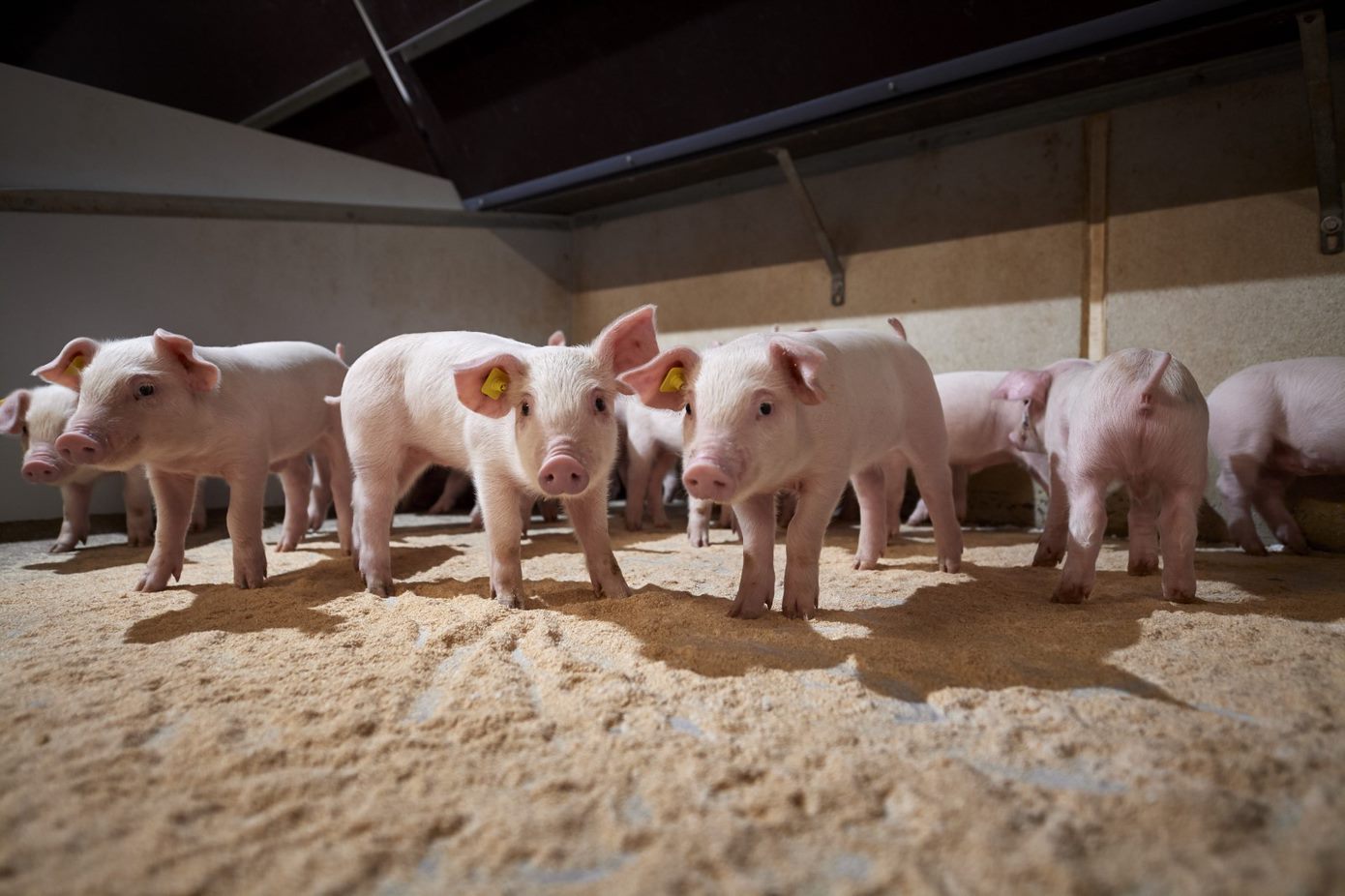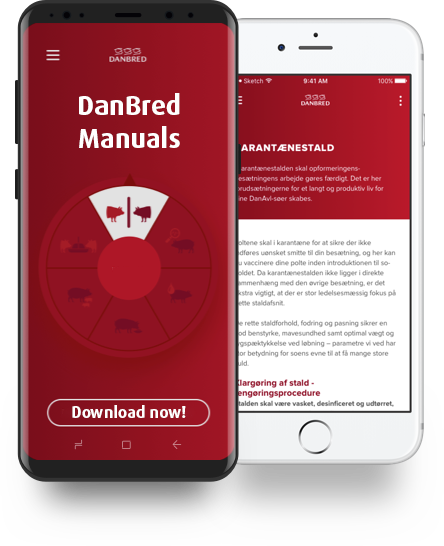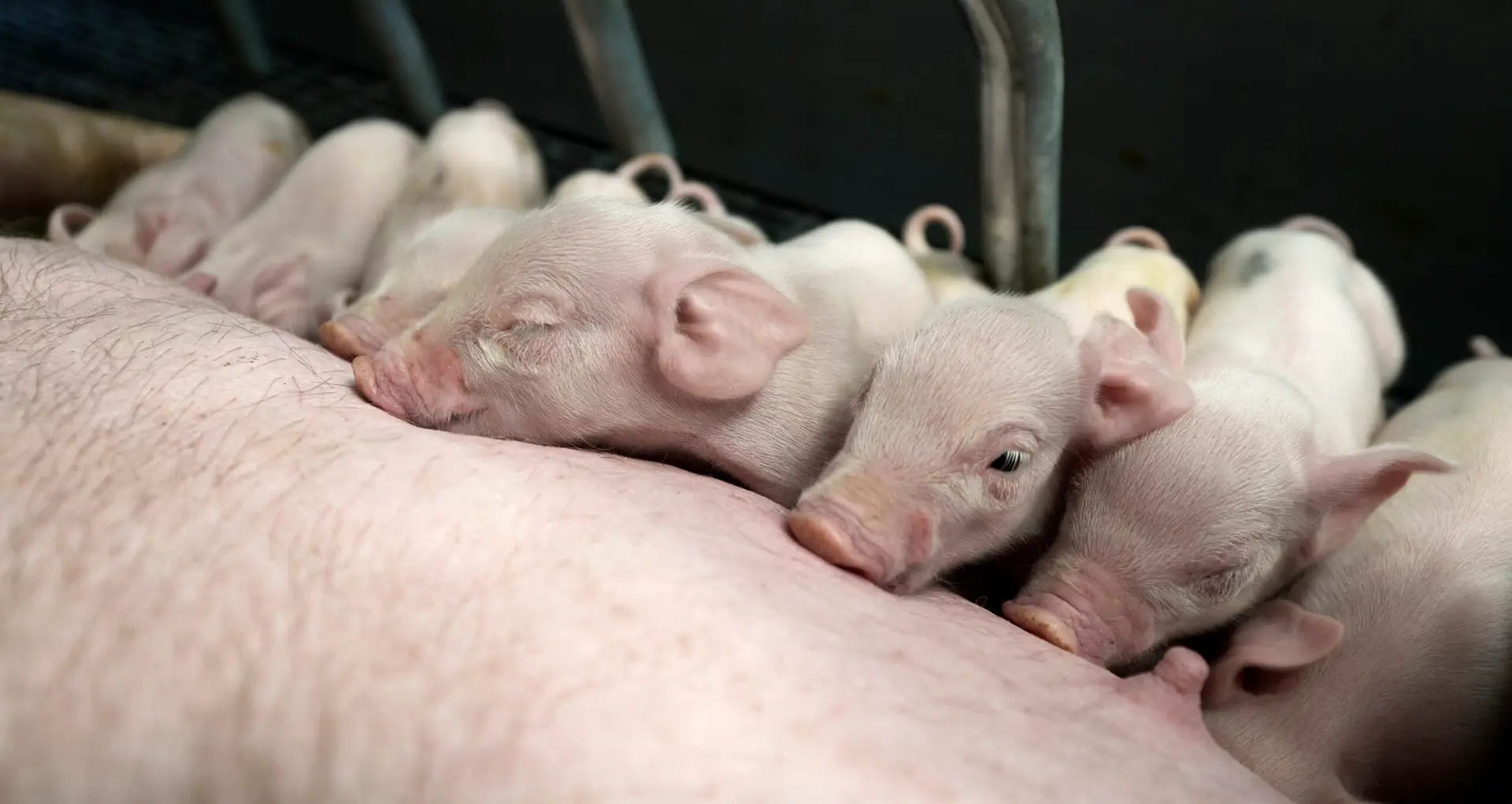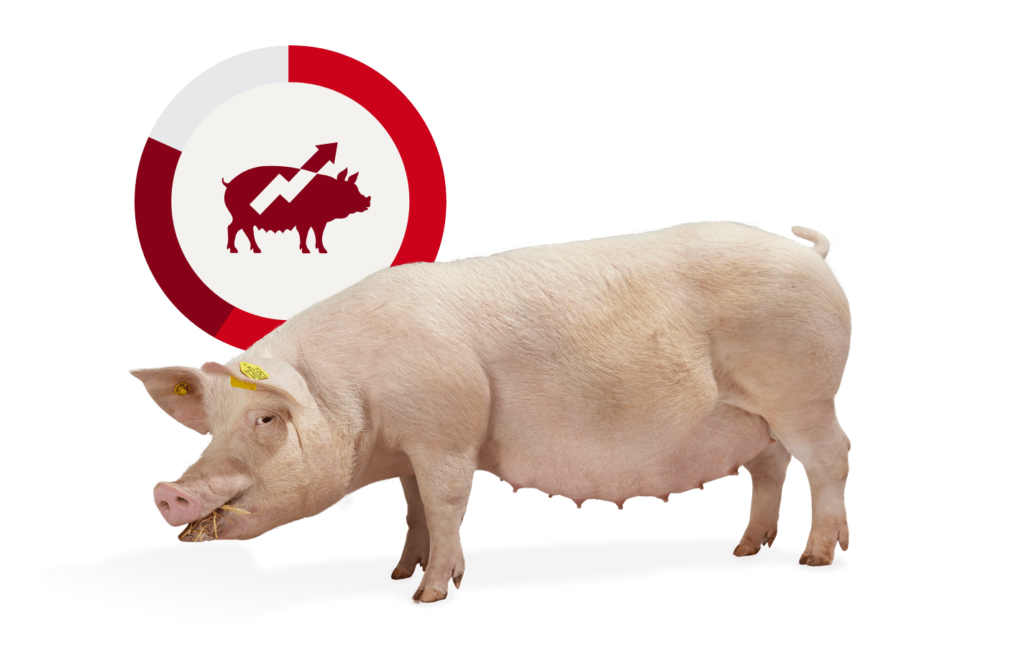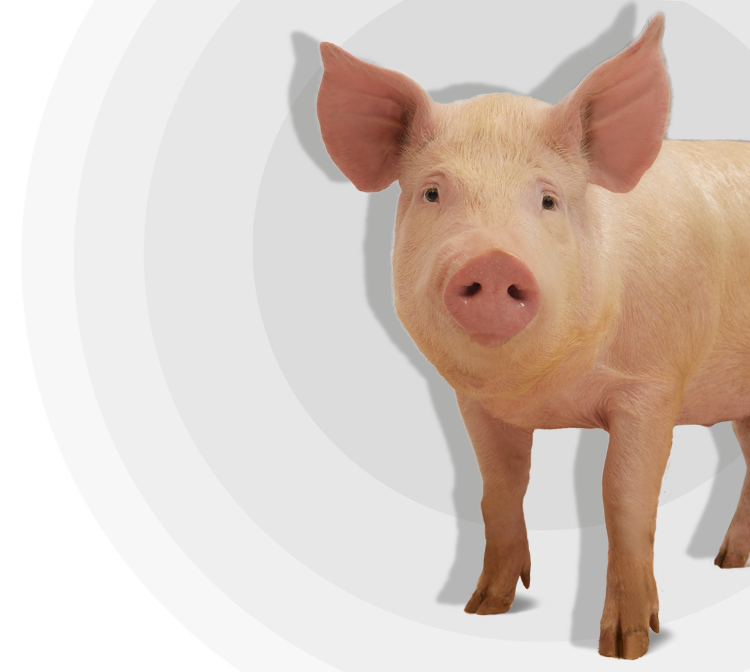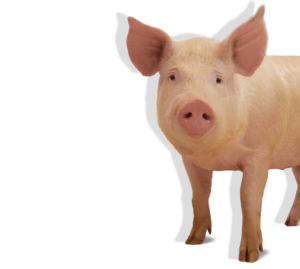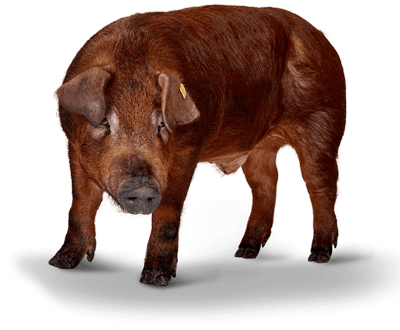By Inger Morthorst Møller, on behalf of DanBred.
As breeders, some of the worst nightmares is to get an infection with swine disease like Porcine Reproductive and Respiratory Syndrome (PRRS), Enzootic Pneumonia (EP), or Pleuropneumonia (APP) into the farm. Any disease has negative health and economic consequences. The possibility of selling stock will decline and the animal will be less attractive at the market. Therefore, the incentive to keep high biosecurity should be a priority.
Pig diseases have different routes of infection. Some diseases such as PRRS, EP, and APP are airborne diseases, which means that bacteria and viruses can be encapsulated in droplets of water and spread through the wind. The first-mentioned diseases can spread up to 10 km in favorable weather conditions, but APP is only transmitted by close contact.
The largest excretion of infection occurs from viremic animals (animals with the virus present in their blood). Therefore, there is a great risk of introducing infections to a herd by inserting new gilts directly into the herd without using quarantine facilities. Remains from infected animals are also of significant importance to introducing infections to the herd, so you must also pay attention to trucks.
When evaluating and assessing external infection control, it can be useful to use the principles from the food sector, where
Hazard Analysis of Critical Control Points (HACCP) is used to prevent contamination and control the temperature of food. All processes where there are breaches of the barriers must be analyzed, and a plan must be formed to minimize the risk.
A focus point to prevent the introduction of new infections
The gilt quarantine will protect the sow farm from new infections.
If newly bought gilts are infected just before delivery, they can introduce infectious agents to the sow farm without give you a chance to slow down and prevent it. However, if gilts are held in a quarantine unit for a minimum of eight weeks, we can ensure that the incubation period for the potential disease is over. Therefore, if an animal is infected, we will see it before insertion into the sow herd.
Transport to and away from the farm
Trucks for the transportation of pigs driving to the farm are a huge potential risk to introduce infection. It should always be ensured that trucks that drive close to the farm are cleaned and disinfected. During loading/unloading, it is important to make sure that the truck driver and farm staff do not walk in the same footprint. This can be prevented by a fixed rail on the door where the pigs go to the ramp; thus, pigs can go under the rail but not the man.
Trucks carrying animals for slaughterhouses have a particularly high risk of moving infectious agents around. Therefore slaughter animals should be loaded outside of the fenced herd area, e.g., at a special loading location or by driving a mobile delivery truck away from the area from which the animals loaded on the transport. The mobile delivery truck is then cleaned before entering the farm area again.
The slurry as a source of infection
Slurry has led to the introduction of bacteria and viruses to healthy herds. This can occur if the slurry is transported between herds or slurry wagons drive through different farms. Although the slurry wagon is empty, it will contain air and aerosols with infectious agents. If slurry has previously been driven from, e.g., PRRS positive farm, then this air will flow into the area around the herd as the wagon fills with slurry from your herd. Therefore, efforts should be made to ensure that slurry is driven only by your trucks and wagons, but if this work is outsourced, the wagon should only run with slurry from herds with the same or greater health status.
Filtration of the air intake
There is a risk that infectious agents can be carried with the wind from one herd to another if they are close to each other and the wind direction is favorable. Therefore, in some geographical locations, it may be a reasonable option to filter the air intake to the herd. A GIS-map (Geographic Information System) that visualizes other herds can be helpful to evaluate the risk of getting an introduction of airborne disease. GIS-maps with associated SPF health status (Specific pathogen-free health program) are only available in Denmark, but locating herds on a map and having knowledge about farms in the area which is of risk to your farm will give a good overview of the geographical risks. In some areas with many pig farms, it could be a good idea to consider filtrating the incoming air through HEPA-filters, which will destroy bacteria and viruses in the air by UV-irradiation.
Dead animals and pests
Dead animals must be stored safely to prevent pests from reaching them and subsequently carrying infections from one farm to another. We must remember that trucks that pick up dead animals come from many places, and therefore the pick-up point should be located at an appropriate distance from the herd and contact. This task must be carried out by a person who will not re-enter the herd or as the last task of the day, to prevent contamination back to healthy animals.
In addition to the correct storage of dead animals, it is also important to have good pest control and avoid favorable living conditions for them, e.g., by avoiding spilled feed near silos or possible intrusion into the herd area. The vegetation around the buildings is important for the presence of pests.
Person quarantine and entrance
People who visit multiple herds have a responsibility to avoid spreading pig-specific diseases and have a responsibility not to avoid carrying zoonotic agents between farms and the public. The infection carried by persons is avoided, among other things, by complying with quarantine and having clear guidelines for access to the herd in the form of baths and changing clothes.
Standard quarantine rules are 24 hours after visiting herds located in areas with ASF. This rule also applies to hunters and persons you do not have in-depth knowledge of, e.g. customers must keep a quarantine of 24 hours. The quarantine time may be reduced to 12 hours if the farm owner has in-depth knowledge of the guest or employees and their movements.
Further reading:
Biosecurity rules for farm staff and visitors
Avoiding the spread of viruses

